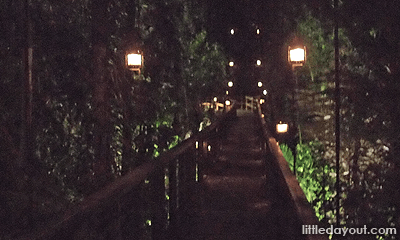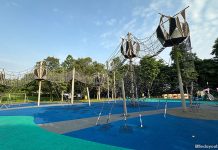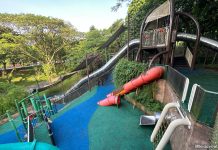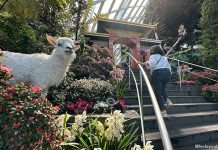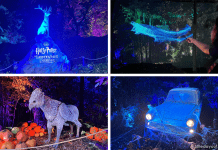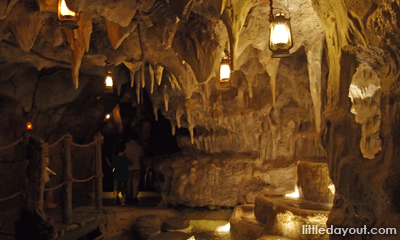
Fancy an evening walk with small animals scurrying around you? If that sounds like a fun evening out to you, visit the Night Safari’s Wallaby Trail.
This trail is based on an Australasian theme and features 13 new animal exhibits, housed in both indoor and outdoor environments. It replaces the Night Safari’s Forest Giants Trail and allows you to take an after-hours walkabout at the Mandai outback.
Hopping over to the Wallaby Trail
As you enter the Night Safari, the Wallaby Trail is a short walk past the main tram station. Just after crossing the tramway, a gentle slope leads downwards to the Ranger Station which marks the start of the Wallaby Trail.
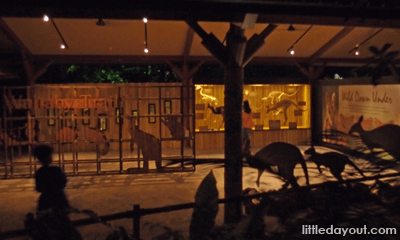
What is Down Under?
Within the Ranger Station, there are signboards that introduce Australia’s wildlife. Learn about the features and characteristics of marsupials, and all the other unique animals that call Australia home.
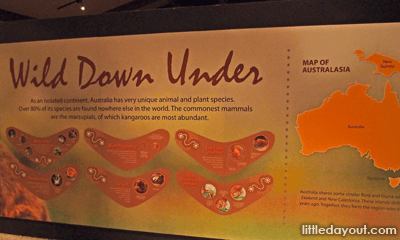
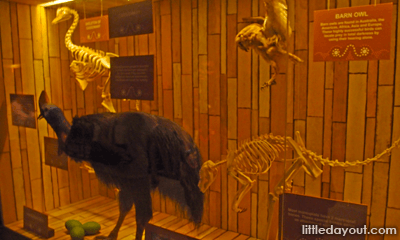
Mini Marsupials
The first animals you will encounter are the Brush-tailed Possums and Sugar Gliders. Their glass enclosures allow you to view them up close.
Possums are small marsupials, about the size of a cat, that live in trees. Like all marsupials, they have a pouch to carry their young. Sugar Gliders are a close relation of the Brush-Tailed Possum. If you are wondering where they got their name, it is from their preference for sweet nectarous food and their uncanny ability to leap from branch to branch. This is achieved using small flaps of skin between their hands and their feet, much like a flying squirrel. They are especially intriguing to watch and the kids will enjoy trying to spot them as they hop from tree to tree in the blink of an eye.
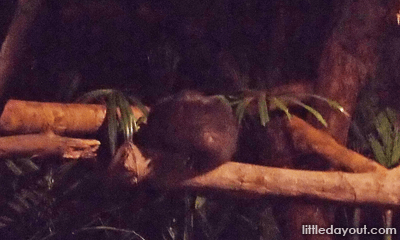
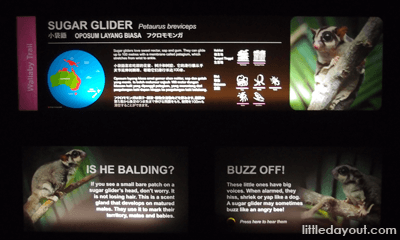
Life in a Cave
Heading past the Sugar Gliders is the Wallaby Trail’s Naracoorte Cave area.
Modelled after the Naracoorte Caves National Park in South Australia, this reconstruction of a limestone cave has a waterfall as well as exhibits on little creepy-crawlies. While the actual Naracoorte Cave is known for its extensive fossil collection that led to it being designated a UNESCO World Heritage Site in 1994, you will find live exhibits that include scorpions and roof rats in our local version.
Nonetheless, the cave structure is also of interest. Stalactites and stalagmites pierce through the cave roof and floor, casting flickering dark shadows throughout the cave. Kerosene lanterns dangling from the ceiling and a small stream flows through the cave, leading to a waterfall that hangs like a curtain over the far end of the cave.
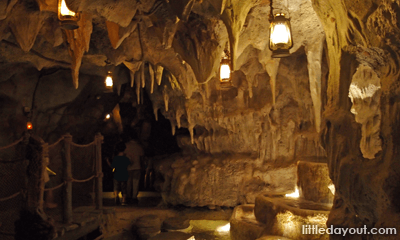
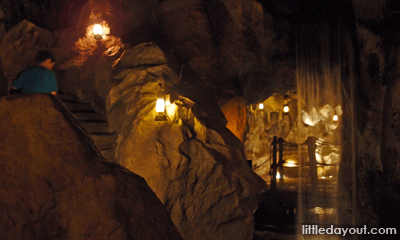
On the outside of the cave is an expedition tent. In the corner of the tent, lit by a kerosene lamp, sits a box full of boomerangs. This makes you wonder what kind of expedition the intrepid adventurers were on.
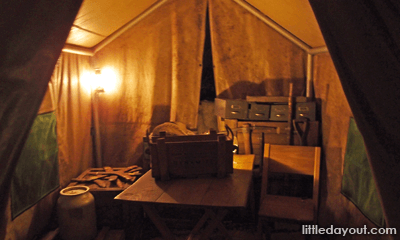
To the Wallabies
Once you have had enough of the cave, head round the back and look for the sign that points toward the suspension bridge. A narrow path in that direction leads to the Wallaby enclosure that lends its name to the entire trail.
The Wallaby exhibit is a walk-in enclosure, similar to the Kangaroo enclosure at the Singapore Zoo. A lighted pathway guides visitors through the enclosure and past the furry marsupials.
You can find two types of wallabies here. The Bennett’s Wallaby, commonly found in Tasmania, is the larger of the two and can grow up to 1.5 metres tall. The Parma Wallaby is much smaller and only grows up to half a metre. Amazingly, up till 1965, the Parma Wallaby was thought to be extinct until they were rediscovered on Kawau Island, near Auckland.
Both these wallabies are free-roaming within the enclosure. They are known to be shy animals, so do not be surprised if you find them shunning the lighted walkway in favour of the shadows. This makes them a bit hard to spot but you can have fun by challenging the kids to spot them and identifying which species they belong to.
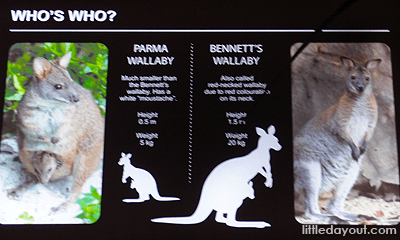
After you finish looking for wallabies in the dark, end off your visit by viewing two more exhibits – the Tawny Frogmouth and the White-lipped Python.
The Tawny Frogmouth is an intriguing bird that looks similar to an owl but is more closely related to nightjars and oilbirds. Unlike owls that hunt small mammals with their feet, the Tawny Frogmouth feeds mostly on insects which it catches with its beak. It rarely flies to hunt like an owl, but instead, waits for its prey to come to it. Its main defence mechanism is to sit still and attempt to blend in with its surroundings. See if you can spot the Tawny Frogmouth within the exhibit.
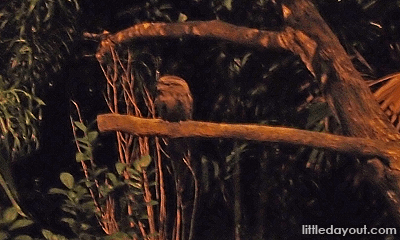
Turn Left or Turn Right?
At the end of the trail, depending on how tired your little ones are, you can choose between continuing by turning towards the Tiger exhibit and the East Lodge, or heading back to the Night Safari’s exit via the Suspension Bridge. Whatever your choice, you will find that with the Wallaby Trail, there is plenty for kids to see and do at the Night Safari.
The trail adds on to the already packed itinerary that includes a tram ride, the Creatures of the Night show and the other walking trails. With its Australian theme, this trail brings a welcomed flavour of the Down Under to one of Singapore’s most popular attractions.
